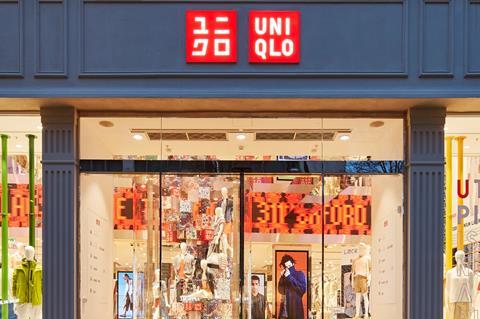Sustainability and digitisation are reshaping the fashion retail industry. Diebold Nixdorf’s Reint Jan Holterman takes a closer look at both transformational forces—and their implications for fashion brands
In a bid to become more sustainable, fashion firms are backing closed-loop recycling, with 60% of fashion executives already invested in it or planning to this year, according to McKinsey research.

Closed-loop recycling should reduce the production of virgin raw materials and decrease textile waste and is now starting to be rolled out at scale. Uniqlo pledged to make its clothes of 50% recycled materials by 2030.
Fashion retailers are also jumping into the resale market.
The secondhand fashion retail market is expected to double in size and reach $77bn (£58m) in revenue by 2025, states ThredUp.
Already, high-profile brands including Lululemon and Nike have opened their own re-commerce marketplaces for consumers to send in used items for credit on their next purchase.
Another aspect of building a ‘sustainable brand’ is being fully transparent about product origins by offering ‘back to its roots’ traceable product information.
Fashion brands are investing in technologies to share this kind of product information with both consumers and partners.
Diving into virtual worlds
For the next three years, the online fashion industry is projected to grow by 26% to nearly $1trn (£753bn) in market worth, says Statista.
This channel opens up new opportunities for seamless shopping experiences from discovery to checkout. Think tailored in-app purchase journeys and test opportunities using livestreaming and augmented reality try-on.
Besides the hard cash that online and digital channels bring to fashion retailers today, some brands are already getting involved in the ‘next level of digital.’

For example, Nike acquired metaverse fashion brand RTFKT that uses “cutting edge innovation to deliver next-generation collectables that merge culture and gaming” and should accelerate Nike’s digital transformation.
The brand is serious about going virtual and has also teamed up with Roblox to build its own virtual world called Nikeland.
Nike is not alone. Multiple fashion brands, like Italy’s OTB, – owner of Viktor&Rolf, Balenciaga and Adidas Originals — are investing in their own virtual reality shopping journeys as part of their digital strategy.
Implications for fashion retailers
These examples highlight only a few of the many steps fashion retailers are taking to build more sustainable and digital-savvy brands. But what does this all imply for their business strategy?
First and foremost, fashion retailers need to connect easily with consumers and business partners alike.
Digital commerce, re-commerce marketplaces and virtual reality worlds all require enhanced ways to connect and communicate with consumers across a multitude of channels, touchpoints and (virtual) locations.
It also means collaborating and connecting more closely with business partners.
For example, introducing a digital product passport requires tight cooperation.
“Often it may feel a bit like building an airplane while flying it, as technologies used are evolving rapidly themselves, too”
The entire supply chain has to agree on common standards about how to store and exchange product and production data, and must have access to the same tools to do so accordingly.
A connected workflow and deep integration to efficiently exchange data on these and other parts of the production process are an absolute must.
Business agility is a necessity
Offering an end-to-end digital commerce experience is already a challenge in itself, let alone becoming an active player in the metaverse.
Often it may feel a bit like building an aeroplane while flying it, as technologies used are evolving rapidly themselves, too.
What is needed is a highly flexible ‘experience platform’ that lets retailers, business partners, consumers, software developers and technology providers effectively work together.
Retailers must be mindful that platforms should be open to working with current and future technologies, channels and touchpoints as well as being extremely flexible so retailers can configure new consumer journeys and business workflows on the fly whenever and wherever they are.
And of course, it should be deployed and managed as lean and as efficiently as possible to make it worthwhile for the retailer.
If you missed our recent Vynamic® Retail Platform Summit on this topic, please download the roundtable and check it out.

Reint Jan Holterman is global product marketing manager for retail software at Diebold Nixdorf.
Learn how Diebold Nixdorf is working with retailers around the globe to implement their own experience platforms. Watch the video here.































